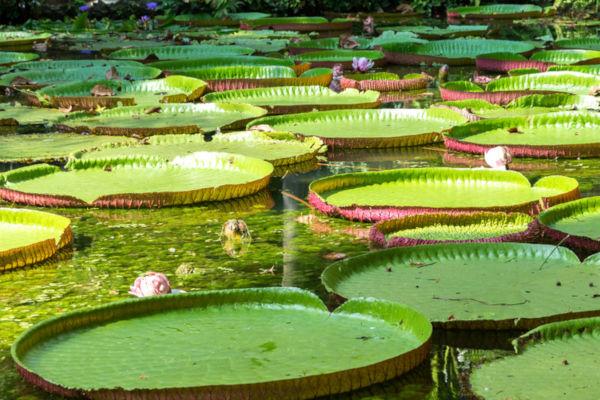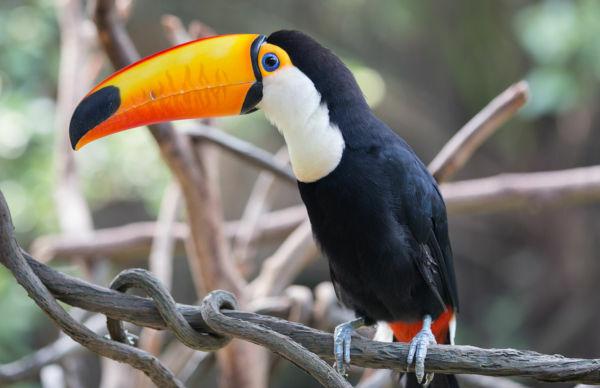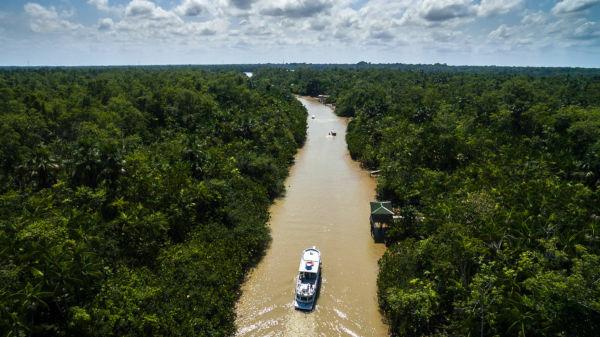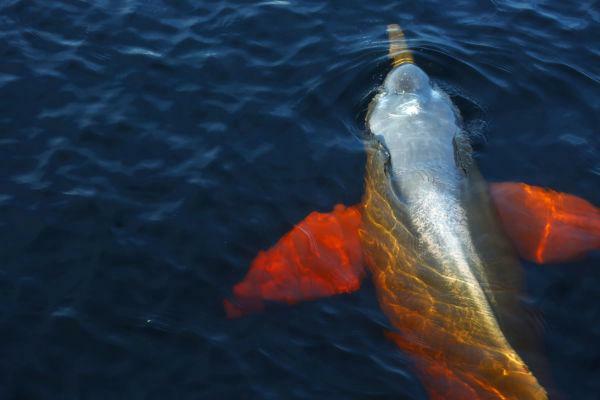THE Amazon comprises a set of ecosystems that involve the hydrographic basin of the Amazon River, as well as the Amazon Forest; is considered to region of greatest biodiversity on the planet and the largest biome in Brazil. It is not exclusively Brazilian and is therefore found in other countries.
Summary
The Amazon is considered the region with the greatest biodiversity on the planet.
The Amazon biome is not exclusive to Brazilian territory, covering areas from other countries.
It comprises the set of ecosystems that correspond to the Amazon Forest, the largest tropical forest in the world, and also the Amazon Basin, the largest hydrographic basin on the planet.
The fauna is extremely rich and has more than 30 million species.
The flora of the Amazon is very diverse, consisting of trees, herbs, shrubs, lianas and vines.
About 17% of the biome has been devastated in the last 50 years.
Features
Location |
Brazil, Bolivia, Colombia, Ecuador, Guyana, French Guiana, Peru, Suriname and Venezuela. |
Area |
Considering its scope in other countries, the biome has about 6.9 million km2. In Brazil: 4,196,943 million km2, according to IBGE. |
Population |
Approximately 33 million inhabitants, including about 1.6 million indigenous people. |
States covered in Brazil |
It occupies approximately 49.29% of the Brazilian territory, in the states of Acre, Amapá, Amazons, For, Roraima, Rondônia, Mato Grosso, Maranhão and Tocantins. |
Mind Map: Amazon Biome

*To download the mind map in PDF, Click here!
Vegetation and flora
THE Amazon houses the Amazon rainforest, considered to biggest rainforest in the world, covering an area of more than 5 million km2. The forest has a high number of species (animals and plants), and is therefore rich in biodiversity.
The vegetation, in general, is characterized by a dense forest and the presence of large trees. The biome has about 3,650,000 km² of continuous forests. Specifically, vegetation is classified into three categories:
Firm land forest: vegetation located in regions of higher altitudes, these are, therefore, characterized by no flooding and their vegetation is always dry. There are large trees, such as chestnut tree, Palm tree and mahogany.
Igapó forest: vegetation located in terrains of lower altitudes, which are flooded practically all the time. There is presence of low vegetation, such as mosses and bushes. In these woods, it is possible to find the water lily, aquatic plant, symbol of the Amazon biome.
floodplain forests: vegetation located in regions of intermediate altitudes and that are flooded at a certain time of year. Higher areas remain flooded for less time. The lower areas remain flooded for a longer time. The species found in these areas are similar to those found in the igapó forests, also presenting trees up to 40 meters in height.
A survey carried out in the Amazon revealed that the biome has about 14,003 plant species which divide into trees, herbs, shrubs, lianas and vines. Of this total, about 76% is in Brazil.|1| The flora presents high medicinal potential and economic. It is possible to find species of bromeliads and orchids, as well as rubber trees and buritis, among other plants and trees.

The water lily is a symbol of the Amazon biome and is found in the igapó forests.
Fauna
The fauna of the Amazon is extremely rich. Studies indicate that it is possible to find in the region about 30 million animal species, and, despite this, the fauna of this biome is not fully known. It is composed, especially, by birds, rodents, reptiles, insects and amphibians. Toucans, macaws, parrots, monkeys, jaguars, alligators and manatees are symbols of this biome.

The toucan is one of the most beautiful representatives of the Amazon fauna.
Climate
The predominant climate in the Amazon is the wet equatorial. It is a region characterized by long periods of rain, with rainfall ranging from 1500 mm and 3600 mm per annum. THE air humidity is high, reaching 80%, and temperatures vary between 22°C and 28°C.
Read more:The Amazon and the rains in Brazil
Hydrography

The Amazon River is the main river in the Amazon basin.
The Amazon covers the region of Amazon Basin, considered to largest river basin on the planet, occupies more than 7 million km2. The main river is the Amazon river, which has more than 1,100 tributaries that flow into it.
Rivers are often characterized by the color of their waters. There are muddy rivers, due to the concentration of nutrients and sediments, such as the Amazon River; there are the black water rivers, characterized by the presence of sand and humus, such as the Rio Negro; and there are the clear water rivers, which do not have as much concentration of nutrients and have rapids in their stretches, such as the Xingu River.
The main rivers are:
Amazon river: born in the Andes Mountains, in Peru. It enters Brazil known as Solimões. In some stretches, its width can reach 100 meters. It's a very navigable river.
Black: it is considered the largest tributary on the left bank of the Amazon River.
Tapajos: it starts on the border between the states of Mato Grosso, Pará and Amazonas, flowing into the right bank of the Amazon River.
Wood: born in the Andes Mountains, in Bolivia.
Also know:Flying rivers in the Amazon
Relief
In the Amazon there are three main forms of relief: plains, represented by areas flooded by rivers; plateaus, represented by mountain ranges; and depressions, such as the region of the northern and southern Amazon depressions.
The geological structure of the region comprised by the biome is formed by the Guyana Shield. There are sedimentary basins along the Amazon River region. Crystalline shields are found north and south of these sedimentary basins.
Devastation

The devastation in the Amazon region has worried many environmentalists and may have irreversible consequences.
In recent decades, the Amazon has suffered an increase in deforestation in its areas. According to a survey conducted by North American Thomas Lovejoy (professor at George Mason University) and Brazilian Carlos Nobre (coordinator of the National Institute of Science and Technology for Climate Change), the Amazon biome may suffer irreversible losses due to logging. Which, according to the researchers, has already reached 17% in the last 50 years, with the limit being 20%, so that there are no irreversible consequences for the climate and the hydrological cycle.
According to the Amazon Institute of Man and Environment (Imazon), the deforestation in the biome increased by 40% between 2017 and 2018, losing almost 4,000 km2 of native forest. Deforestation occurred mainly in private areas, settlements and conservation units.|2|
Read too:Illegal deforestation in the Amazon
Map

Location of the Amazon biome, according to the Brazilian Institute of Geography and Statistics. (Source: IBGE.)
Curiosities

The dolphin is one of the mammal species found in the Amazon.
In the Amazon there are dolphins, known as freshwater dolphins. A survey, signed by specialists from the National Institute for Research in the Amazon, reveals that two species of porpoises (pink and black dolphin) are decreasing in the region, and may be extinct.|3|
In Amazonian rivers, about 85% of the fish in all of South America are concentrated.
According to the Atlas of Pressures and Threats to Indigenous Lands in the Brazilian Amazon, 357 remaining quilombo communities live in the Amazon.
GRADES
|1| Plant species cataloged in the Amazon. To access, Click here.
|2| Amazon deforestation increased 40% in the last twelve months. To access, Click here.
|3| Porpoise population falls in the Amazon. To access, Click here.
by Rafaela Sousa
Graduated in Geography

